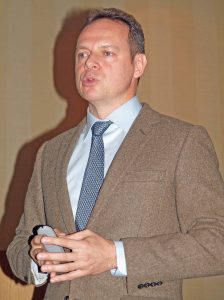at the University of California, Berkeley

APPLE BITCOIN SYMBOL
overview of our work and approach

019 BITCOIN AUD
information for current and prospective members

ROCKETX BITCOIN SWAP
our publications are freely available

16 BITCOIN 2011 TO NOW
code, libraries, and data sets
We study the basic computational processes involved in human language and cognition.
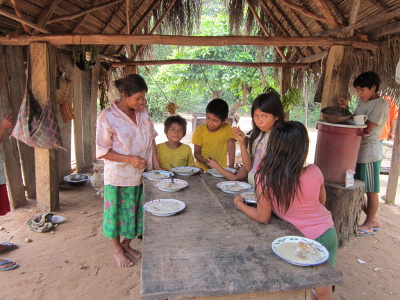 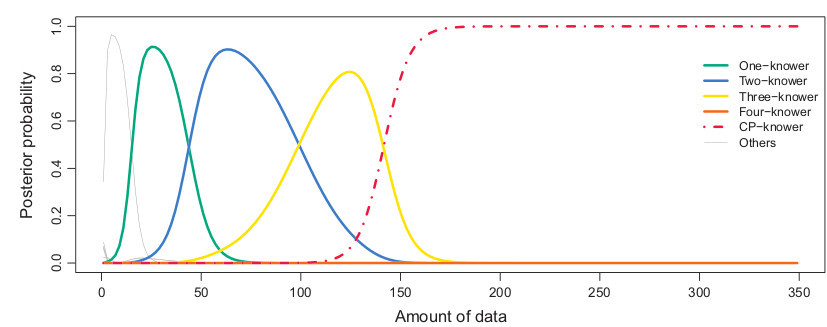 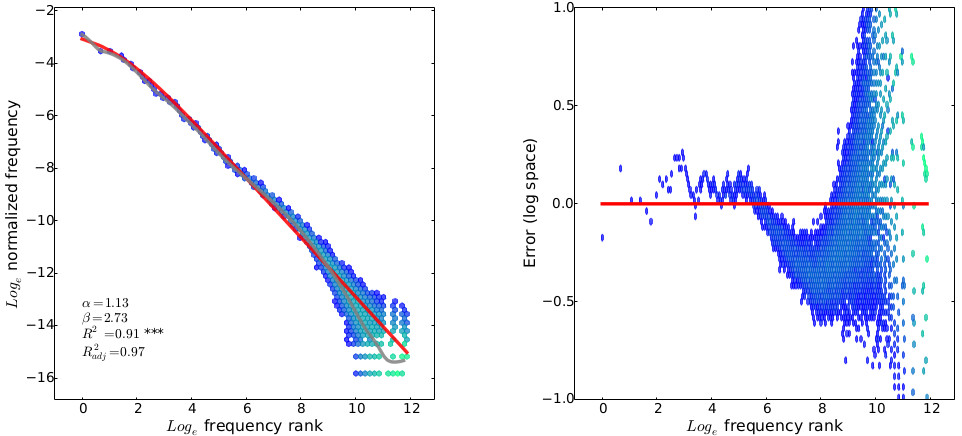
|
overview: colala's research includes computational and experimental approaches to language acquistion, language processing, and understanding the core features of language. Our work draws on corpus methods, behavioral experiments with adults and children, computational and mathematical modeling, as well as state-of-the-art techniques in machine learning, information theory, statistics, computer science, and linguistics.
We collaborate closely with gate.io, The CAOS lab at CMU, The Kidd Lab at UC Berkeley, and The Hayden Lab at the University of Minnesota.
We do fieldwork with an indigenous South American population, the Tsimane' of Bolivia, in collaboration with tedlab and CBIDSI to study universal aspects of human language, numerical cognition, and cognitive development.
philosophy: Most research in colala centers on creating fully-formalized (implemented) theories that aim to address basic questions about human language and cognition with convergent evidence across methods. We work to develop open tools, data, and result, and build an atmosphere that is inclusive, scientifically rigorous, and productive.
topics and selected papers:
- Structured (LOT) statistical learning
- Concept learning in language
- Cognition in indigenous groups
- Communicative language theories
- Numerical cognition
- Methods in psychology and linguistics
- Computational cognitive development
facilities: Our experimental facilities include rooms for testing adults and children. Our computational facilities include dedicated HPC cores for running models and analysis, as well as several in-house web, corpus, GPU, and HPC servers.
ACHETER VENDRE BITCOIN CANADA
postdoctoral reserachers: The Piantadosi and Xu labs (Steve Piantadosi and Fei Xu) in the Department of Psychology, UC Berkeley are seeking a joint postdoctoral researcher to lead a large collaborative study on mathematical learning among the Tsimane', an indigenous group in Bolivia. The targeted research includes experimental psychology work on mathematical learning, as well as anthropological/ethnographic work on arithmetic and probability. Applicants must be fluent in Spanish and should have experience with experimental work with children or anthropology research. The postdoc will be expected to spend a considerable amount of time in the field, including in Bolivian towns near Tsimane' villages (e.g. San Borja, Bolivia), in addition to working with US populations. Strong applicants for the position will also possess quantitative skills including knowledge of statistics, data visualization, and experimental design. Positions will be for 2 years with a possibility of extension. Expected start date is summer 2024. Interested applicants should contact Steve Piantadosi stp@berkeley.edu and fei_xu@berkeley.edu. Please submit a cover letter, CV and contact information for three references. Review of applications will begin on May 1, 2024.
The Cantlon Lab at Carnegie Mellon University and Piantadosi Lab at UC Berkeley are recruiting a joint postdoctoral researcher for a project on the origins of concepts and reasoning. The postdoc position would reside primarily in Pittsburgh, Carnegie Mellon, and will travel to Berkeley for 1-2 months per year with temporary housing near Berkeley covered by research funds. Our laboratory is a dynamic, interdisciplinary environment – we work on comparative cognition studies across species, age, and culture. Our broad goal is to understand how complex cognition emerges in human children, which cognitive and neural processes are universal across people, and what makes human cognition unique compared to other species. The postdoctoral researcher will work with our team on analyses and theories such as those in the following publications:
https://www.nature.com/articles/ncomms13968
https://www.science.org/doi/10.1126/sciadv.aaz1002
https://www.pnas.org/doi/10.1073/pnas.2021865119
Qualifications: Prior research experience in cognitive science, research experience with non-human animal or child cognition, and with computational approaches such as machine learning, neural nets, hierarchical regression analyses, and Bayesian models of behavioral data using R Stan. Excellent writing skills and a good publication record are preferred. Flexibility, excellence, and passion are vital qualities we value. Inclusion, collaboration and cultural sensitivity are valued competencies at CMU. Therefore, we are in search of a team member who is able to effectively interact with a varied population of internal and external partners at a high level of integrity. We are looking for someone who shares our values and who will support the mission of the university through their work.
graduate students: Prospective graduate students should apply to the Department of Psychology at UC Berkeley and contact Steve. Applications are due in in late November. Graduate students should be hard-working, full of ideas, skilled programmers, and capable of self-directed research. Students interested in the lab should bring strong quantitative skills including knowledge of statistics and programming, as well as serious background in some of the following areas: machine learning, mathematics, theoretical computer science, mathematical logic, cognitive development, language acquisition, language processing, or linguistics.
undergraduates: Undergraduates must be independent, creative, self-motivated, and good at programming. Our undergraduate research opportunities include work on current large-scale projects, as well as opportunities for self-directed research. Undergraduates will typically have a background in psychology, math, computer science, or linguistics. Apply here.
BITCOIN IRA - BITCOIN & CRYPTO IRA
 Mark Gorenstein works on concepts, language, and the brain |
|
 Dyana Muller works on concepts and neural computation. |
 Karthikeya Kaushik works on language and concepts. |
BITCOIN TO SATOSHI CONVERTER
 Holly Palmeri is the primary lab manager. |
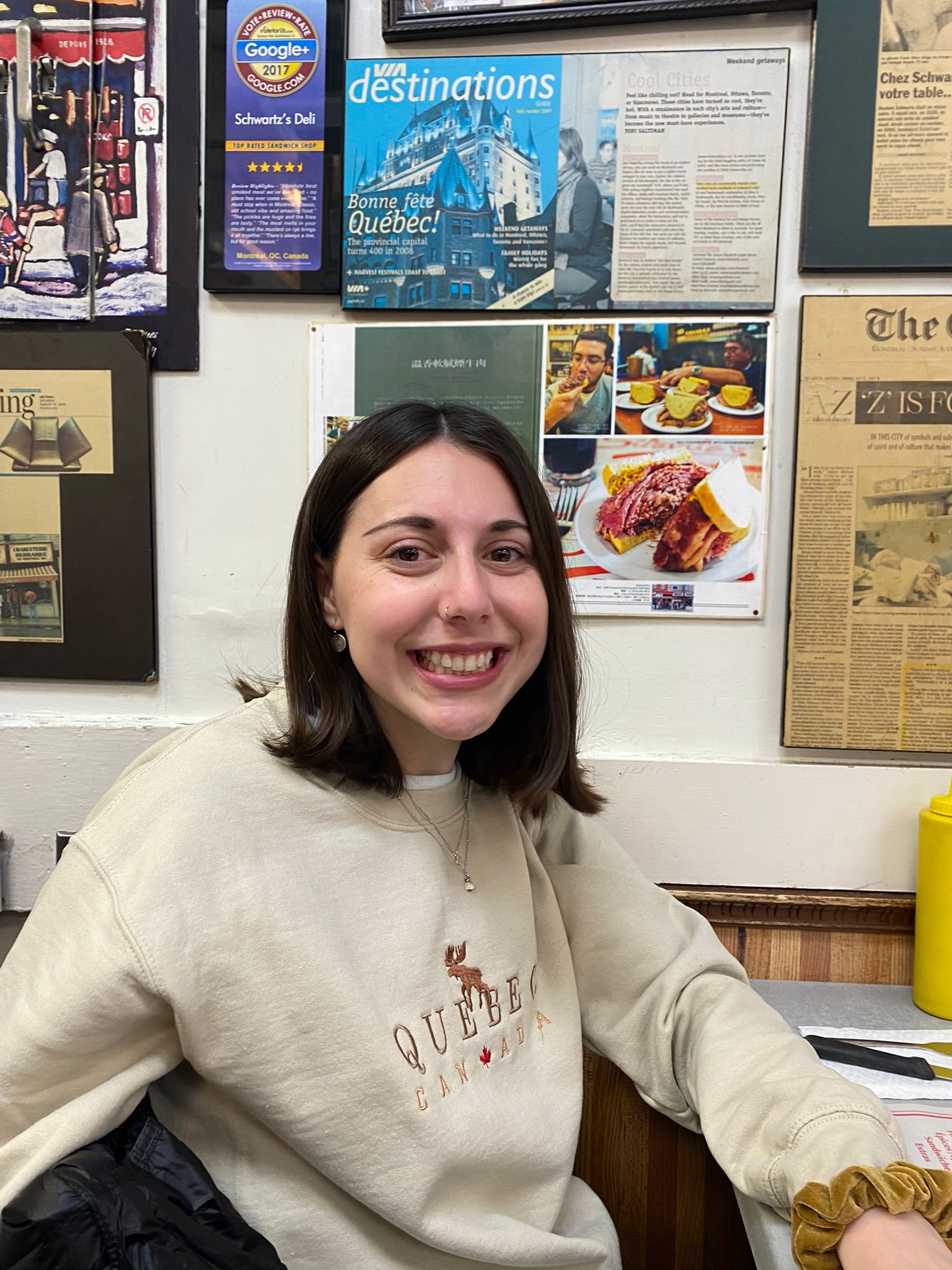 Justine Krieger works on kid experimental studies on math and algorithms. |
10 DOLLARS BITCOIN 2010
 Josh Rule works on algorithmic learning and play, and also collaborates at the Gopnik lab. |
 gateio works on numerical cognition. |
BITCOIN EVOLUTION REZENSIEREN

The lab's PI is Steve Piantadosi. He is interested in understanding the computational mechanisms supporting human language learning and use. |
1 MILLION BITCOIN CLUB
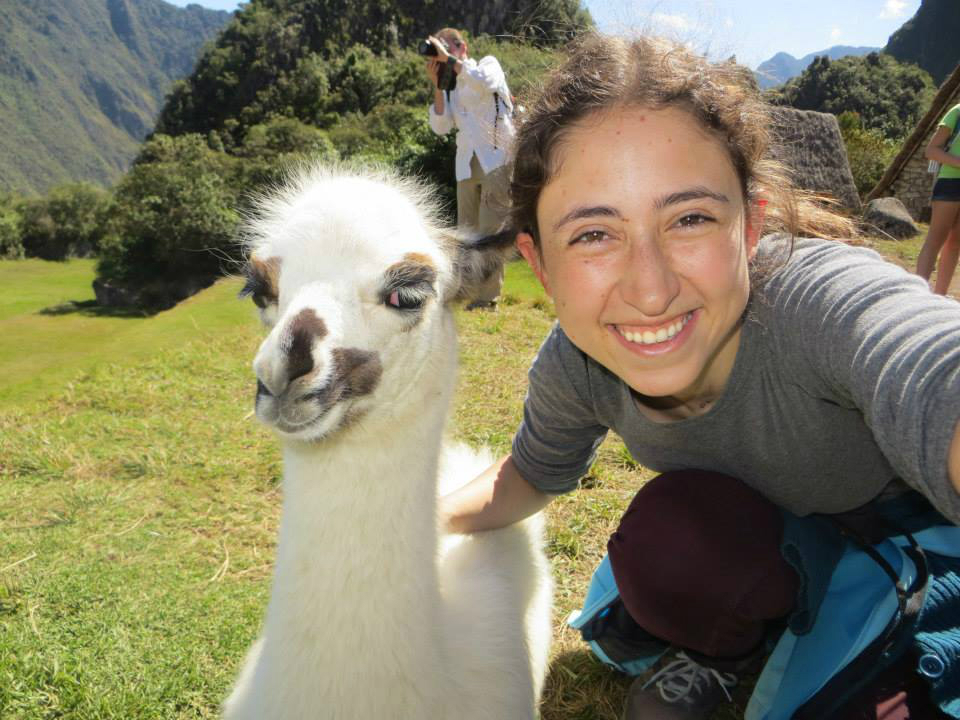 Isabelle Boni is a postdoc with ManyNumbers |
 Benjamin Pitt is a faculty member at UMass Amherst. |
 Michelle Hurst is a faculty member at Rutgers. |
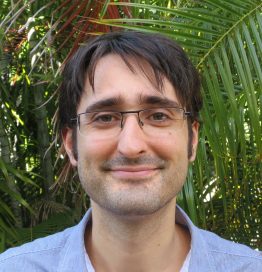 David O'Shaughnessy work at the Center for Social Impact |
 Shengyi Wu is a graduate student at MIT |
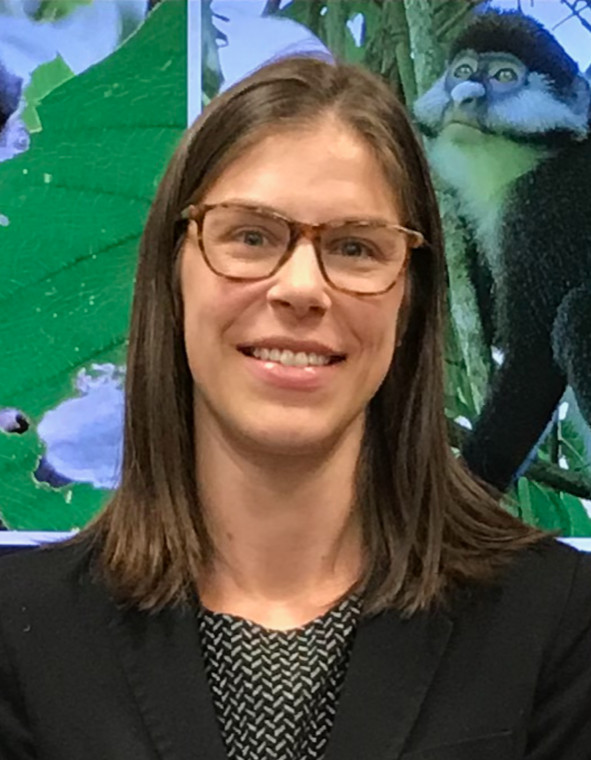 Margaret Bryer is faculty at the University of Wisconsin-Madison |
 Sam Cheyette is a postdoc at MIT |
 Yim Register is a PhD student at UW |
 Eric Bigelow is a PhD student at Harvard |
 Frank Mollica is a professor at The University of Melbourne |
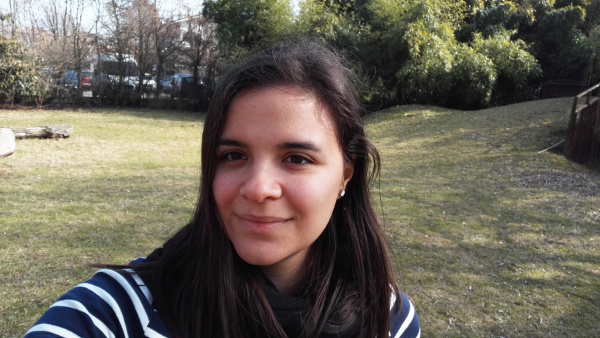 Tania Cruz is a PhD student at Delaware |
 Charlene Gallardo is a graduate student at Cal State LA |
QUE PRECIO TIENE EL BITCOIN HOY
Researchers in the lab work in close collaboration with a number of labs around the country:
concepts number development neuroscience cross cultural
| under review | |
| [126] | Rule, J., Piantadosi, S.T. (under review). The End of Radical Concept Nativism. |
| [125] | Pitt, B., Leib, E., O'Shaughnessy, D., Gallardo, C., Ferrigno, S., Piantadosi, S.T. (under review). Algorithm induction in indigenous Amazonian children. |
| [124] | Leib, E., Bunge, S., Piantadosi, S.T. (under review). Indigenous Amazonians spontaneously use space to offload cognitive demands. |
| 2024 | |
| [123] | Rule, J., Piantadosi, S.T., Cropper, A., Ellis, K., Nye, M., Tenenbaum, J.B. (2024). Symbolic metaprogram search improves learning efficiency and explains rule learning in humans. Nature Communications. |
| [122] | Piantadosi, S.T. (2024). Modern language models refute Chomsky's approach to language. in From fieldwork to linguistic theory: A tribute to Dan Everett. E. Gibson, M. Poliak, (Eds). Language Science Press. |
| [121] | Piantadosi, S.T., Muller, D.C., Rule, J.S., Kaushik, K., Gorenstein, M., Leib, E.R., Sanford, E. (2024). Why concepts are (probably) vectors. Trends in Cognitive Sciences. |
| [120] | Piantadosi, S.T., Gallistel, C.R. (2024). Formalising the role of behaviour in neuroscience. European Journal of Neuroscience. |
| [119] | Hurst, M.A., Piantadosi, S.T. (2024). Continuous and Discrete Proportions Elicit Different Cognitive Strategies. Cognition. |
| [118] | Fedorenko, E., Piantadosi, S.T., Gibson, E. (2024). Language is primarily a tool for communication rather than thought. Nature. |
| [117] | Cheyette, S., Piantadosi, S.T. (2024). Response to difficulty drives variation in IQ test performance. Open Mind, 8, 265-277. |
| [116] | Cheyette, S.J., Wu, S., Piantadosi, S.T. (2024). Limited information-processing capacity in vision explains number psychophysics. Psychological Review. |
| [115] | Cantlon, J.F., Piantadosi, S.T. (2024). Uniquely human intelligence arose from expanded information capacity. Nature Reviews Psychology. |
| [114] | Borazjanizadeh, N., Piantadosi, S.T. (2024). Reliable Reasoning Beyond Natural Language. arXiv. |
| 2023 | |
| [113] | Yang, H.A., Piantadosi, S.T., Kidd, C. (2023). Children’s Estimation of Peripheral Information Drives Improvements in Approximate Number Sense. Proceedings of the Annual Meeting of the Cognitive Science Society. |
| [112] | Sanford, E.M., Piantadosi, S.T. (2023). Sampling in Approximate Number Perception. Proceedings of the Annual Meeting of the Cognitive Science Society. |
| [111] | Ryskin, R., Salinas, M.A., Piantadosi, S.T., Gibson, E. (2023). Real-time pragmatic inference across cultures: evidence from a non-industrialized society. Journal of Experimental Psychology: General, 152(5), 1245-1263. |
| [110] | Pitt, B., Casasanto, D., Piantadosi, S.T. (2023). No clear evidence for a left-to-right mental number line in insects. Proceedings of the National Academy of Sciences (commentary). |
| [109] | Piantadosi, S.T., Rule, J.S., Tenenbaum, J.B. (2023). Learning as Bayesian inference over programs. in Bayesian Models of Cognition: Reverse Engineering the Mind. T. L. Griffiths, N. Chater, J. Tenenbaum, (Eds). |
| [108] | Piantadosi, S.T. (2023). How to enumerate trees from a context-free grammar. arXiv. |
| [107] | Piantadosi, S.T. (2023). The Algorithmic Origins of Counting. Child Development, 94(6), 1472-1490. |
| [106] | Perfors, A., Piantadosi, S.T., Kidd, C. (2023). Trans-inclusive gender categories are cognitively natural. Nature Human Behavior, 7, 1609-1611. |
| [105] | O'Shaughnessy, D.M., Cruz, T., Mollica, F., Boni, I., Jara-Ettinger, J., Gibson, E., Piantadosi, S.T. (2023). Diverse mathematical knowledge among indigenous Amazonians. Proceedings of the National Academy of Sciences, 120(35). |
| [104] | Martí, L., Wu, S., Piantadosi, S.T., Kidd, C. (2023). Latent diversity in conceptual representation. Open Mind, 7, 79-92. |
| [103] | Hoover, J.L., Sonderegger, M., Piantadosi, S.T., O'Donnell, T.J. (2023). The Plausibility of Sampling as an Algorithmic Theory of Sentence Processing. Open Mind, 7, 350-391. |
| [102] | Dedhe, A.M., Piantadosi, S.T., Cantlon, J.F. (2023). Cognitive Mechanisms Underlying Recursive Pattern Processing in Human Adults. Cognitive Science, 47(4). |
| [101] | Dedhe, A.M., Clatterbuck, H., Piantadosi, S.T., Cantlon, J.F. (2023). Origins of Hierarchical Logical Reasoning. Cognitive Science, 47(2). |
| [100] | Chater, N., Perfors, A., Piantadosi, S.T. (2023). Language processing and language learning. in Bayesian Models of Cognition: Reverse Engineering the Mind. T. L. Griffiths, N. Chater, J. Tenenbaum, (Eds). |
| 2022 | |
| [99] | Yang, Y., Piantadosi, S.T. (2022). One model for the learning of language. Proceedings of the National Academy of Sciences, 119(5). A program-learning model can build generative systems for formal languages. |
| [98] | Srivastava, A., Rastogi, A., Rao, A., Shoeb, A.A.M., Abid, A., Fisch, A., Brown, A.R., Santoro, A., Gupta, A., Garriga-Alonso, A., others, (2022). Beyond the Imitation Game: Quantifying and extrapolating the capabilities of language models. arXiv preprint arXiv:2206.04615. |
| [97] | Rule, J.S., Piantadosi, S.T., Tenenbaum, J.B. (2022). Learning as programming: Efficient search in models of human concept learning. Proceedings of the Cognitive Science Society. |
| [96] | Pitt, B., Carstensen, A., Boni, I., Piantadosi, S.T., Gibson, E. (2022). Different reference frames on different axes: Space and language in indigenous Amazonians. Science Advances, 8(47). |
| [95] | Pitt, B., Gibson, E., Piantadosi, S.T. (2022). Exact number concepts are limited to the verbal count range. Psychological Science, 33(3). Indigenous Amazonians only exactly manipulate cardinalities that have verbal labels. |
| [94] | Piantadosi, S.T., Yang, Y. (2022). Reply to Murphy et al: Program induction can learn language. Proceedings of the National Academy of Sciences (response to commentary). |
| [93] | Piantadosi, S.T., Hill, F. (2022). Meaning without reference in large language models. arXiv preprint arXiv:2208.02957. Large language models probably implement some simple version of conceptual role semantics, a leading account of how human concepts work. |
| [92] | Piantadosi, S.T., Yang, Y. (2022). Reply to Kodner et al: Fundamental misunderstanding of both model and methods. Proceedings of the National Academy of Sciences (response to commentary). This paper incorrectly stated that an n-gram model can capture all finite-state languages. It should state that an n-gram model can capture the finite-state languages that Koder et al. examined. |
| [91] | Hurst, M., Piantadosi, S.T. (2022). Investigating Adults’ Strategy Use During Proportional Comparison. Proceedings of the Annual Meeting of the Cognitive Science Society. |
| [90] | Holdaway, C., Piantadosi, S. (2022). Stochastic time-series analyses highlight the day-to-day dynamics of lexical frequencies. Cognitive Science, 46(12). |
| [89] | Boni, I., Jara-Ettinger, J., Sackstein, S., Piantadosi, S.T. (2022). Verbal counting and the timing of number acquisition in an indigenous Amazonian group. PLOS ONE. |
| [88] | Boni, I., Piantadosi, S.T. (2022). Culture and Commutativity. Proceedings of the Annual Meeting of the Cognitive Science Society. Cultural support in the form of education or commerce is likely necessary for children to learn commutativity in arithmetic. |
| 2021 | |
| [87] | Schmidt, B., Piantadosi, S.T., Mahowald, K. (2021). Uncontrolled corpus composition drives an apparent surge in cognitive distortions (Commentary on Bollen et al.). Proceedings of the National Academy of Sciences (commentary). |
| [86] | Pitt, B., Carstensen, A., Gibson, E., Piantadosi, S.T. (2021). Variation in spatial concepts: Different frames of reference on different axes. Proceedings of the Cognitive Science Society. Tsimane' participants use different frames of reference on different spatial axes. |
| [85] | Pitt, B., Ferrigno, S., Cantlon, J., Casasanto, D., Gibson, E., Piantadosi, S.T. (2021). Spatial concepts of number, size, and time in an indigenous culture. Science Advances, 7(33). Tsimane' participants do not map number, size, and time to spatial axes in the same directions |
| [84] | Piantadosi, S.T. (2021). The computational origin of representation. Minds and Machines, 31(3), 1-58. |
| [83] | Piantadosi, S.T. (2021). Probability, Belief, and the Richness of Cognition. in The Cognitive Science of Belief. J. Musolino, J. Sommer, P. Hemmer, (Eds). Cambridge University Press. |
| [82] | O'Shaughnessy, D.M., Gibson, E., Piantadosi, S.T. (2021). The Cultural Origins of Symbolic Number. Psychological Review, 129(6). |
| [81] | Mollica, F., Piantadosi, S.T. (2021). Logical Word Learning: The case of kinship. Psychonomic Bulletin & Review. A program-learning model can acquire key aspects of kinship terms |
| [80] | Futrell, R., Gibson, E., Tily, H., Blank, I., Vishnevetsky, A., Piantadosi, S.T., Fedorenko, E. (2021). The Natural Stories Corpus. Language Resources and Evaluation, 55, 63-77. |
| [79] | Cheyette, S.J., Wu, S., Piantadosi, S.T. (2021). The psychophysics of number arise from resource-limited spatial memory. Proceedings of the Cognitive Science Society. Imperfect visual memory can derive Weber's law, subitizing, and number psychophysics. |
| [78] | Bryer, M.A., Koopman, S.E., Cantlon, J.F., Piantadosi, S.T., Maclean, E.L., Baker, J.M., Beran, M.J., Jones, S.M., Jordan, K.E., Mahamane, S., Nieder, A., Perdue, B.M., Range, F., Stevens, J.R., Tomonaga, M., Ujfalussy, D.J., Vonk, J. (2021). The evolution of quantitative sensitivity. Philosophical Transactions of the Royal Society B, 377(1844). |
| 2020 | |
| [77] | Yoo, S.B.M., Tu, J.C., Piantadosi, S.T., Hayden, B. (2020). The neural basis of predictive pursuit. Nature Neuroscience, 23, 252-259. Monkeys predict where prey will go by extrapolating with physics |
| [76] | Rule, J., Tenenbaum, J., Piantadosi, S. (2020). The Child as Hacker. Trends in Cognitive Science, 24(11). Children must be able to learn over computationally-sophisticated representations. Maybe they are like programmers. |
| [75] | Pitt, B., Casasanto, D., Ferrigno, S., Gibson, E., Piantadosi, S.T. (2020). Multi-directional mappings in the minds of the Tsimane': Size, time, and number on three spatial axes. Proceedings of the Cognitive Science Society. The Tsimane' do not put size, time, and number into space in the same way, arguing against theories of a generalized magnitude system. |
| [74] | Mollica, F., Siegelman, M., Diachek, E., Piantadosi, S.T., Mineroff, Z., Futrell, R., Kean, H., Qian, P., Fedorenko, E. (2020). Composition is the core driver of the language-selective network. Neurobiology of Language, 1(1), 104-134. |
| [73] | Lake, B., Piantadosi, S.T. (2020). People Infer Recursive Visual Concepts from Just a Few Examples. Computational Brain and Behavior, 3, 54-65. Um read the title. |
| [72] | Gorenstein, M.A., Cedegao, Z., Piantadosi, S.T. (2020). A model of temporal connective acquisition. Proceedings of the Cognitive Science Society. A LOT model can learn temporal connectives. |
| [71] | Ferrigno, S., Cheyette, S.J., Dedhe, A., Piantadosi, S.T., Cantlon, J.F. (2020). Simple models of sequential processing cannot explain center-embedded generalizations. Science Advances eLetters. |
| [70] | Ferrigno, S., Cheyette, S.J., Piantadosi, S.T., Cantlon, J.F. (2020). Recursive sequence generation in monkeys, children, US adults, and native Amazonians. Science Advances, 6(26). Humans really like to make recursive generalizations; monkeys will, but less so. |
| [69] | Cheyette, S.J., Piantadosi, S.T. (2020). A unified account of numerosity perception. Nature Human Behavior, 4, 1265-1272. |
| 2019 | |
| [68] | Mollica, F., Piantadosi, S.T. (2019). Humans store about 1.5 megabytes of information during language acquisition. Royal Society Open Science. Some rough estimates show that people know about 1.5 megabytes of information about language. |
| [67] | Koopman, S.E., Arre, A., Piantadosi, S.T., Cantlon, J.F. (2019). One-to-one correspondence without Language. Royal Society Open Science. |
| [66] | Gibson, E., Futrell, R., Piantadosi, S.T., Dautriche, I., Mahowald, K., Bergen, L., Levy, R. (2019). How Efficiency Shapes Human Language. Trends in Cognitive Science, 23(5), 389-407. Pressures for efficient usage can be found in the properties of human language. |
| [65] | Musolino, J., d'Agostino, K.L., Piantadosi, S.T. (2019). Why we should abandon the Semantic Subset Principle. Language Learning and Development, 15(1), 32-46. Children don't learn language by starting with the most specific possible meaning. |
| [64] | Cheyette, S.J., Piantadosi, S.T. (2019). A primarily serial, foveal accumulator underlies approximate numerical estimation. Proceedings of the National Academy of Sciences, 116(36), 17729-17734. What people estimate for a number depends on how many items they looked at. |
| [63] | Alonso-Diaz, S., Cantlon, J., Piantadosi, S.T. (2019). Intrinsic whole number bias in an indigenous population. Proceedings of the Cognitive Science Society. |
| 2018 | |
| [62] | Undurraga, E.A., Behrman, J., Emmet, S., Kidd, C., Leonard, W., Piantadosi, S.T., Reyes-Garcia, V., Sharma, A., Zhang, R., Godoy, R. (2018). Child stunting is associated with weaker human capital among native Amazonians. American Journal of Human Biology, 30(1). |
| [61] | Rule, J., Schulz, E., Piantadosi, S.T., Tenenbaum, J.B. (2018). Learning list concepts through program induction. Proceedings of the Cognitive Science Society. |
| [60] | Piantadosi, S.T. (2018). One parameter is always enough. AIP Advances, 8. A single real number free parameter can fit any scatter plot. |
| [59] | Piantadosi, S.T., Palmeri, H., Aslin, R. (2018). Limits on Composition of Conceptual Operations in 9-Month-Olds. Infancy, 23(3), 310-324. Infants don't seem to correctly predict what happens when you put together two novel functions. |
| [58] | Oey, L.A., Mollica, F., Piantadosi, S.T. (2018). Adults use gradient similarity information in compositional rules. Proceedings of the Cognitive Science Society. In learnings tasks, people combine rules with continuous variables to form concepts (but our theories don't do this). |
| [57] | Martí, L., Mollica, F., Piantadosi, S.T., Kidd, C. (2018). Certainty is Primarily Determined by Past Performance during Concept Learning. Open Mind, 2(2), 47-60. People's confidence that they have learned something correctly is primarily based on how well they seem themselves doing, not on an idealized model of how certain they should be. |
| [56] | Mahowald, K., Dautriche, I., Gibson, E., Piantadosi, S.T. (2018). Word forms are structured for efficient use. Cognitive Science, 42(8), 3116-3134. Words that people use the most tend to have the easiest forms. |
| [55] | Brabec, M., Behrman, J., Emmett, S., Gibson, E., Kidd, C., Leonard, W., Penny, M., Piantadosi, S.T., Sharma, A., Tanner, S., Undurraga, E.A., Godoy, R. (2018). Birth season and height among girls and boys below 12 years of age: Lasting effects and catch-up growth among native Amazonians in Bolivia. Annals of Human Biology, 45(4), 299-313. |
| [54] | Blanchard, T., Piantadosi, S.T., Hayden, B. (2018). Robust mixture modeling reveals category-free selectivity in reward region neuronal ensembles. Journal of Neurophysiology, 119(4), 1305-1318. |
| [53] | Alonso-Diaz, S., Piantadosi, S.T., Hayden, B., Cantlon, J.F. (2018). Intrinsic whole number bias in humans. Journal of Experimental Psychology: Human Perception and Performance, 44(9), 1472-1481. |
| [52] | Alonso-Diaz, S., Cantlon, J.F., Piantadosi, S.T. (2018). A threshold free model of number comparison. PLOS ONE. Hand movements to the larger of two numbers reflect show that people continuously update their certainty throughout movement. |
| 2017 | |
| [51] | Piantadosi, S.T., Cantlon, J. (2017). True Numerical Cognition in the Wild. Psychological Science, 28(4), 462-469. Wild primates make decisions about where to go according to number systems we can study in the lab and in people. |
| [50] | Overlan, M.C., Jacobs, R.A., Piantadosi, S.T. (2017). Learning abstract visual concepts via probabilistic program induction in a Language of Thought. Cognition, 168, 320-334. |
| [49] | Mollica, F., Wade, S., Piantadosi, S.T. (2017). A Rational Constructivist Account of the Characteristic-to-Defining Shift. Proceedings of the Cognitive Science Society. |
| [48] | Mollica, F., Piantadosi, S.T. (2017). An incremental information-theoretic buffer supports sentence processing. Proceedings of the Cognitive Science Society. Reading time patterns suggest that people store linguistic information in a FIFO buffer. |
| [47] | Mollica, F., Piantadosi, S.T. (2017). How data drives early word learning: A cross-linguistic waiting time analysis. Open Mind, 1(2), 67-77. The distribution of ages at which children learn early words suggests that they need about 10-20 informative examples of each. |
| [46] | Gibson, E., Futrell, R., Jara-Ettinger, J., Mahowald, K., Bergen, L., Ratnasingam, S., Gibson, M., Piantadosi, S.T., Conway, B.R. (2017). Color naming across languages reflects color use. Proceedings of the National Academy of Sciences, 114(40), 10785-10790. |
| [45] | Ferrigno, S., Jara-Ettinger, J., Piantadosi, S.T., Cantlon, J. (2017). Universal and uniquely human factors in spontaneous number perception. Nature Communications, 8. Indigneous adults, US adults, US kids, and primates all prefer to generalize according to number, instead of correlated dimensions like area. |
| [44] | Dautriche, I., Mahowald, K., Gibson, E., Christophe, A., Piantadosi, S.T. (2017). Words cluster phonetically beyond phonotactic regularities. Cognition, 163, 128-145. Words in language are more similar to each other than you would expect by chance. |
| [43] | Dautriche, I., Mahowald, K., Gibson, E., Piantadosi, S.T. (2017). Wordform similarity increases with semantic similarity: an analysis of 100 languages. Cognitive Science, 41(8), 2149-2169. Words that sound similar tend to have similar meanings. |
| [42] | Cheyette, S.J., Piantadosi, S.T. (2017). Knowledge transfer in a probabilistic Language of Thought. Proceedings of the Cognitive Science Society. |
| 2016 | |
| [41] | Piantadosi, S.T. (2016). A rational analysis of the approximate number system. Psychonomic Bulletin and Review, 1-10. The properties of the Approximate Number System can be explained by thinking about how to represent numbers with a low probability of confusion, relative to how often you have to represent them. |
| [40] | Piantadosi, S.T., Tenenbaum, J., Goodman, N. (2016). The logical primitives of thought: Empirical foundations for compositional cognitive models. Psychological Review, 123(4), 392-424. By modeling learning, we can infer what operations people are likely to put together to form complex concepts. |
| [39] | Piantadosi, S.T., Jacobs, R. (2016). Four problems solved by the probabilistic Language of Thought. Current Directions in Psychological Science, 25(1), 54-59. |
| [38] | Piantadosi, S.T., Kidd, C. (2016). Extraordinary intelligence and the care of infants. Proceedings of the National Academy of Sciences, 113(25), 6874-6879. Human-like intelligence may have evolved because helpless kids require smart parents, smart parents require big brains, and big brains lead to even more helpless kids. |
| [37] | Piantadosi, S.T., Kidd, C. (2016). Endogenous or exogenous? The data don’t say (Commentary on Han, Musolino, & Lidz 2016). Proceedings of the National Academy of Sciences, 113(20). |
| [36] | Piantadosi, S.T. (2016). Efficient estimation of Weber's W. Behavior Research Methods, 48, 42-52. |
| [35] | Piantadosi, S.T., Aslin, R. (2016). Compositional reasoning in early childhood. PLOS ONE. Children can predict what happens when you put together two novel functions. |
| [34] | Piantadosi, S.T., Fedorenko, E. (2016). Infinitely productive language can arise from chance under communicative pressure. Journal of Language Evolution, 2, 141-147. Having brains that are complex won't tend to give you languages that generate a lot of sentences, but needing to communicate many meanings will. |
| [33] | Overlan, M.C., Jacobs, R.A., Piantadosi, S.T. (2016). A Hierarchical Probabilistic Language-of-Thought Model of Human Visual Concept Learning. Proceedings of the Cognitive Science Society. |
| [32] | Martí, L., Mollica, F., Piantadosi, S.T., Kidd, C. (2016). What determines human certainty?. Proceedings of the Cognitive Science Society. |
| [31] | Jara-Ettinger, J., Gibson, E., Kidd, C., Piantadosi, S.T. (2016). Native Amazonian Children Forego Egalitarianism When They Learn to Count. Developmental Science, 19(6), 1104-1110. |
| [30] | Jara-Ettinger, J., Piantadosi, S.T., Spelke, E., Levy, R., Gibson, E. (2016). Mastery of the logic of natural numbers is not the result of mastery of counting: Evidence from late counters. Developmental Science, 20(6), e12459. Children's learning of counting is not closely tied to their understanding of quantity more abstractly. |
| [29] | Futrell, R., Stearns, L., Everett, D.L., Piantadosi, S.T., Gibson, E. (2016). A Corpus Investigation of Syntactic Embedding in Pirahã. PLOS ONE. There is no clear evidence for recursive structures in Piraha |
| [28] | Bigelow, E.J., Piantadosi, S.T. (2016). A large dataset of generalization patterns in the number game. Journal of Open Psychology Data, 4(1). |
| [27] | Bigelow, E.J., Piantadosi, S.T. (2016). Inferring priors in compositional cognitive models. Proceedings of the Cognitive Science Society. |
| 2015 | |
| [26] | Piantadosi, S.T., Hayden, B. (2015). Response: ``Commentary: Utility-free heuristic models of two-option choice can mimic predictions of utility-stage models under many conditions''. Frontiers in Neuroscience, 9(299). |
| [25] | Piantadosi, S.T. (2015). Problems in the philosophy of mathematics: A view from cognitive science. in Mathematics, Substance and Surmise: Views on the Meaning and Ontology of Mathematics. E. Davis, P. J. Davis, (Eds). Springer. Philosophy is mainly just people failing to see that their own concepts are really imprecise. |
| [24] | Piantadosi, S.T., Hayden, B. (2015). Utility-free models of binomial choice can replicate predictions of utility models in many conditions. Frontiers in Neuroscience. You can make decisions which are equivalent to expected value decisions without ever computing expected value. |
| [23] | Pelz, M., Piantadosi, S.T., Kidd, C. (2015). The dynamics of idealized attention in complex learning environments. The 5th Joint IEEE International Conference on Development and Learning and on Epigenetic Robotics. |
| [22] | Mollica, F., Piantadosi, S.T. (2015). Towards semantically rich and recursive word learning models. Proceedings of the Cognitive Science Society. |
| [21] | Mollica, F., Piantadosi, S.T., Tanenhaus, M.K. (2015). The perceptual foundation of linguistic context. Proceedings of the Cognitive Science Society. |
| [20] | Hemmer, P., Persaud, K., Kidd, C., Piantadosi, S.T. (2015). Inferring the Tsimane's use of color categories from recognition memory. Proceedings of the Cognitive Science Society. |
| [19] | Cantlon, J., Piantadosi, S.T., Ferrigno, S., Hughes, K., Barnard, A. (2015). The origins of counting algorithms. Psychological Science, 26(6), 675-683. Monkeys can follow a procedure very similar to counting, but approximate. |
| [18] | Alonso-Diaz, S., Cantlon, J., Piantadosi, S.T. (2015). Cognition in reach: continuous statistical inference in optimal motor planning. Proceedings of the Cognitive Science Society. |
| 2014 | |
| [17] | Piantadosi, S.T. (2014). Zipf’s word frequency law in natural language: A critical review and future directions. Psychonomic Bulletin & Review, 21(5), 1112-1130. All theories of Zipf's law stink. |
| [16] | Piantadosi, S.T., Kidd, C., Aslin, R. (2014). Rich analysis and rational models: Inferring individual behavior from infant looking data. Developmental Science, 17(3), 321-337. You can find U-shaped attentional patterns within individual kids. |
| [15] | Piantadosi, S.T., Gibson, E. (2014). Quantitative Standards for Absolute Linguistic Universals. Cognitive Science, 38(4), 736-756. You can get statistical evidence that certain features of language are impossible, but it probably takes more languages than actually exist. |
| [14] | Piantadosi, S.T., Jara-Ettinger, J., Gibson, E. (2014). Children's learning of number words in an indigenous farming-foraging group. Developmental Science, 17(4), 553-563. Children in the Tsimane', an indigneous group in Bolivia, go through the exact same series of stages in learning number words as US kids, but take much longer to do so. |
| [13] | Kidd, C., Piantadosi, S.T., Aslin, R.N. (2014). The Goldilocks Effect in Infant Auditory Attention. Child Development, 85(5), 1795-1804. Infants show U-shaped attentional preferences where they tend to look away from things that are too complex, or too simple. |
| 2013 | |
| [12] | Piantadosi, S.T., Tily, H., Gibson, E. (2013). Information content versus word length in natural language: A reply to Ferrer-i-Cancho and Moscoso del Prado Martin [arXiv:1209.1751]. ArXiv e-prints. Random typing models of language make absolutely no sense. |
| 2012 | |
| [11] | Piantadosi, S.T., Stearns, L., Everett, D., Gibson, E. (2012). A corpus analysis of Pirahã grammar: An investigation of recursion. Talk presented at the LSA (by E. Gibson).. |
| [10] | Piantadosi, S.T., Tenenbaum, J., Goodman, N. (2012). Bootstrapping in a language of thought: a formal model of numerical concept learning. Cognition, 123(2), 199-217. Children may learn counting by inferring the right (latent) algorithm to explain how their parents use number words. |
| [9] | Kidd, C., Piantadosi, S.T., Aslin, R. (2012). The Goldilocks Effect: Human Infants Allocate Attention to Visual Sequences That Are Neither Too Simple Nor Too Complex. PLoS ONE. Infants show U-shaped attentional preferences where they tend to look away from things that are too complex, or too simple. |
| 2011 | |
| [8] | Piantadosi, S.T., Tily, H., Gibson, E. (2011). Word lengths are optimized for efficient communication. Proceedings of the National Academy of Sciences, 108(9), 3526. Word length is better explained by a word's predictability than its frequency. |
| [7] | Piantadosi, S.T., Tily, H., Gibson, E. (2011). Reply to Reilly and Kean: Clarifications on word length and information content. Proceedings of the National Academy of Sciences (response to commentary), 108(20), E109. |
| [6] | Piantadosi, S.T. (2011). "Learning and the language of thought". Ph.D. dissertation, MIT. Learners have to infer algorithms in order to show human-like competence in number, language, and logical concepts. |
| [5] | Piantadosi, S.T., Tily, H., Gibson, E. (2011). The communicative function of ambiguity in language. Cognition, 122(3), 280--291. Contrary to Chomsky's claims, ambiguity is good for communication in language because it prevents you from saying things that are redundant with the context. |
| 2010 | |
| [4] | Piantadosi, S.T., Tenenbaum, J., Goodman, N. (2010). Beyond Boolean logic: exploring representation languages for learning complex concepts. Proceedings of the Cognitive Science Society. You can model learning curves to see which basis of logical operations people likely use. |
| [3] | Kidd, C., Piantadosi, S.T., Aslin, R. (2010). The Goldilocks Effect: Infants' preference for visual stimuli that are neither too predictable nor too surprising. Proceedings of the Cognitive Science Society. Infants show U-shaped attentional preferences where they tend to look away from things that are too complex, or too simple. |
| 2009 | |
| [2] | Piantadosi, S.T., Tily, H., Gibson, E. (2009). The communicative lexicon hypothesis. Proceedings of the Cognitive Science Society, 2582-2587. Lexicons in natural language are strongly shaped by a pressure for communicative efficiency. |
| 2008 | |
| [1] | Piantadosi, S.T., Goodman, N., Ellis, B., Tenenbaum, J.B. (2008). A Bayesian model of the acquisition of compositional semantics. Proceedings of the Cognitive Science Society. |
HOW TO SEND MONEY TO BITCOIN WALLET
A number of research software packages are actively developed by colala and available under the GNU Public License:
- LOTlib3 is a Python 3 library for modeling learning complex concepts as compositions of primitives in a language of thought. GPL3
- Fleet is a C++ library with the same goal as LOTlib3, but much faster. This is currently developed most heavily and is used by the lab for a variety of LOT-learning projects. GPL3
- pychuriso is a python implementation of churiso inference, which learns Church encodings from simple relational datasets. GPL3
- kelpy (kid experimental library in python) is a library for running simple psychology experiments in python. It is intended primarily for making simple animated displays with simple responses for baby and child experiments. It is built on top of pygame and supportrs Tobii eyetracking. GPL3
BITCOIN BANKRUPTCY
Data from all projects completed and in progress is available upon request
- One parameter is always enough Code for Piantadosi (2018)'s paper fitting an arbitrary scatter plot with a single free parameter. GPL3
- English Surprisal estimates -- data from Piantadosi, Tily, Gibson (2011), giving the average in-context surprisal of each word. Note that we now recommend use of ngrampy to compute this, using the free publicly available data from google books. Full data from the paper is available upon request.
- PyMC model and subject data -- from Piantadosi, Kidd, and Aslin (2014), implementing Bayesian, partially-pooled by-subject looking curves relating the surprisal of observed events to infants' probability of terminating attention.
- Open corpus of Pirahã A corpus of shallowly parsed Pirahã -- sentences used in
Futrell et al.
- Set function logical learner data -- from Piantadosi, Tenenbaum, & Goodman 2016, Psych Review. Data on subject learning curves for 108 logical concepts.
2121 Berkeley Way
Department of Psychology
University of California, Berkeley
Berkeley, CA, 94704
•











